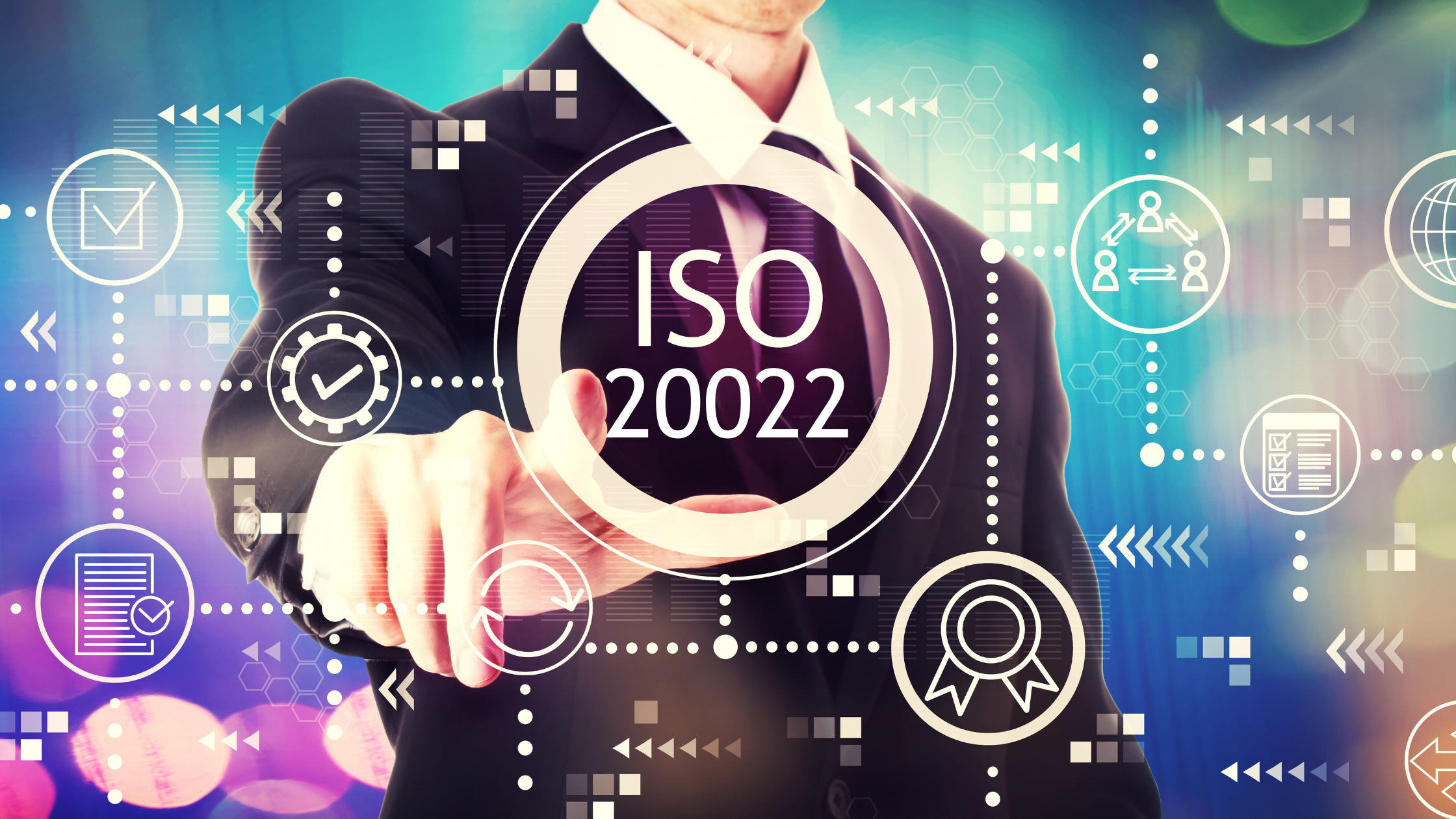
ISO 20022 is rapidly becoming the global standard for financial messaging, promising to revolutionize the way financial institutions communicate and process transactions.
While its adoption is already widespread across Europe and other regions, the American banking sector is now progressing to full implementation. This article explores what ISO 20022 is, its benefits, and the specific implications for the American market.
What is ISO 20022?
ISO 20022 is an international standard for electronic data interchange between financial institutions. It provides a common language and model for financial messages across the globe, covering a wide range of financial services including payments, securities, trade services, cards, and foreign exchange.
The standard was developed by the International Organization for Standardization (ISO) and is designed to be flexible and adaptable to the needs of different markets. ISO 20022 supports richer, more structured, and granular data, enabling enhanced automation and interoperability.
What is the Deadline for ISO 20022 Implementation in the United States?
The deadline for adopting ISO 20022 in the United States, particularly for the Fedwire Funds Service, is set for July 14, 2025. On this date, the Federal Reserve Banks will transition from the existing proprietary message format to ISO 20022 in a ‘big bang’ single-day implementation strategy. This shift will replace all FAIM (Fedwire Application Interface Manual) messages with ISO 20022 messages, marking a significant milestone in modernizing the financial messaging infrastructure.
Although the ISO 20022 global financial standard was first published over two decades ago, the globalization of financial markets and the growing need for interoperable payment systems have accelerated its adoption in recent years. Major market infrastructures, such as Target 2 (T2), have already migrated to ISO 20022, with Fedwire being one of the latest systems to follow.
Benefits of ISO 20022
- Enhanced Data Quality and Richness. ISO 20022 messages carry more detailed information than traditional financial messages. This improves the quality of data, reducing errors and enabling more efficient processing.
- Interoperability. By providing a common language, ISO 20022 facilitates better communication between financial institutions globally. This is particularly beneficial for cross-border transactions.
- Cost Efficiency. Standardization can lead to significant cost savings through streamlined processes and reduced need for reconciliation and manual intervention.
- Regulatory Compliance. The standard supports compliance with various regulatory requirements by ensuring that all necessary data elements are included in financial messages.
- Innovation and Modernization. The rich data set and flexibility of ISO 20022 enable financial institutions to develop new products and services, enhancing customer experience and staying competitive.
Implications for the American Banking Sector
The transition to ISO 20022 in the American market, particularly within the banking sector, is expected to bring about significant changes and opportunities.
- Transition and Implementation Costs. Adopting ISO 20022 requires substantial investment in new technology and infrastructure. Banks need to upgrade their systems, train staff, and potentially redesign business processes. While the initial costs are high, the long-term benefits of improved efficiency and cost savings are substantial.
- Improved Cross-Border Payments. American banks will benefit from enhanced cross-border payment capabilities. ISO 20022 facilitates faster, more transparent, and cost-effective international transactions, supporting the needs of businesses engaged in global trade.
- Competitive Advantage. Early adopters of ISO 20022 in the U.S. banking sector can gain a competitive edge by offering improved services and attracting international clients who already use the standard.
- Regulatory Pressure. U.S. regulators are increasingly advocating for the adoption of ISO 20022 to ensure compliance with global standards and to enhance the overall security and efficiency of the financial system.
- Customer Experience. The enhanced data quality and richness of ISO 20022 messages enable banks to provide better services to their customers. For instance, more detailed transaction data can improve the clarity and usefulness of bank statements and payment receipts.
- Operational Efficiency. With ISO 20022, banks can achieve higher levels of automation and reduce the manual processing of transactions. This not only cuts down operational costs but also reduces the risk of errors and fraud.
Challenges and Considerations
While the benefits are clear, the transition to ISO 20022 is not without challenges. Financial institutions must manage the complexities of migration, including data conversion, system integration, and coordination with global counterparts. Banks must also ensure business continuity during the transition period to avoid disruptions to customer service.
While the benefits of ISO 20022 are clear, the transition to this standard is not without its challenges. Financial institutions must navigate a complex migration process that involves several critical steps.
Data Conversion
Banks need to convert their existing data formats into the ISO 20022 standard. This involves ensuring that all the data fields align correctly with the new format, which can be challenging given the richer and more detailed data structures of ISO 20022.
System Integration
Financial institutions must upgrade their IT systems to support ISO 20022 messages. This includes integrating new software and hardware solutions that can process the enriched data. It may also involve significant changes to existing workflows and processes to accommodate the new messaging standards.
Coordination with Global Counterparts
Since ISO 20022 is a global standard, banks must ensure that their systems can communicate effectively with international partners who have also adopted the standard. This requires rigorous testing and validation to ensure interoperability and to avoid disruptions in cross-border transactions.
Business Continuity
During the transition period, banks must ensure that their operations continue smoothly without affecting customer service. This involves planning for potential downtimes, setting up contingency measures, and ensuring that all stakeholders, including employees and customers, are well-informed and prepared for the changes.
Ongoing Support and Training
Bank staff must be trained to use the new system efficiently, and ongoing support must be available to address any issues that arise during and after the transition.
ISO 20022 represents a significant step forward for the global financial system, and its adoption in the American banking sector is a crucial development. By embracing this standard, U.S. banks can enhance their operational efficiency, improve customer experiences, and stay competitive in an increasingly globalized market. The transition will require careful planning and investment to overcome the challenges and fully realize the benefits of ISO 20022.
As the deadline for Fedwire’s impending migration approaches, American banks must prioritize their ISO 20022 migration strategies to ensure they are ready to meet the demands of the new financial landscape.

